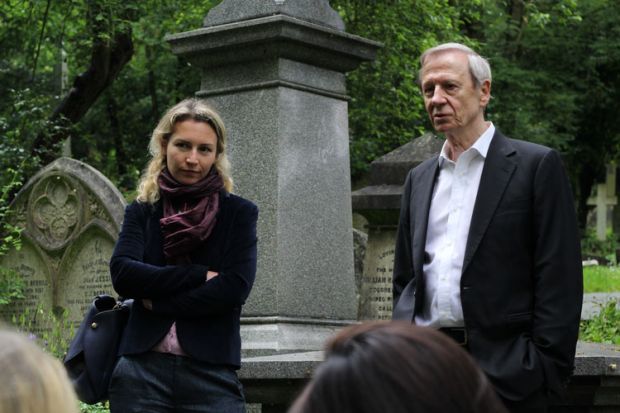It began with strange rumours in the corridors of the London School of Economics, followed by an announcement on its website which warned of “secret plans by a radical group of LSE insurgents to stage a second attempt at challenging the authority of LSE teaching staff”.
The group’s first gathering took place last October when Conor Gearty, professor of human rights law at the LSE, led colleagues and students on a “flash mob” invasion of a crypt at Westminster Cathedral, the setting for a themed debate on participants’ “visions of hell”.
Alerting students that the idea was to be reprised on 28 May, the statement on the LSE website said that “student opinion on the actions of the group has been divided, with some praising their attempts to reinvigorate students’ interest in education via non-traditional methods and others decrying the group as show-offs”.
Those intrigued enough to turn up were given instructions to meet at the entrance to the Highgate Cemetery in the late afternoon.
When he put on the first LSE guerrilla lecture last year, Professor Gearty told Times Higher Education that he was hoping to feed an appetite among students for “more adventurous forms of lecturing”.
Picking up the thread at this week’s event, the students who assembled at the cemetery were directed to Karl Marx’s grave.
There, Lea Ypi, associate professor in political theory at LSE, described how she had been brought up in Albania when communism was still a religion, before distilling her 10-week lecture series on Marxism into just 20 minutes.
Standing at his grave and reading out one of his most celebrated quotations (“The philosophers have only interpreted the world, in various ways. The point, however, is to change it”), she explored how Marx forged a unique blend of the Scottish enlightenment, German idealism and utopian socialism, and considered why his insights might still be relevant today.
Marx is buried in the communist section of Highgate Cemetery among radicals and revolutionaries from Iraq and South Africa as well as from Britain.
Yet opposite his grave is that of a leading ideological opponent, the once world-famous but now largely forgotten Victorian polymath Herbert Spencer (1820-1903).
Also participating in the guerrilla lecture, Lord Giddens, a former director of LSE, argued that Spencer’s libertarian philosophy had proved far more influential than Marxism.
By the end, he and Dr Ypi were standing on the plinth in front of Spencer’s grave debating today’s political challenges and the best ways of meeting them – to an audience of nine students and a fox (as well as your Times Higher Education correspondent).
So what was the reaction to LSE’s educational experiment? One student reported that her mother had worried the guerrilla lecture might be dangerous; another tweeted that it had been the “coolest lecture ever”.
Register to continue
Why register?
- Registration is free and only takes a moment
- Once registered, you can read 3 articles a month
- Sign up for our newsletter
Subscribe
Or subscribe for unlimited access to:
- Unlimited access to news, views, insights & reviews
- Digital editions
- Digital access to THE’s university and college rankings analysis
Already registered or a current subscriber?
